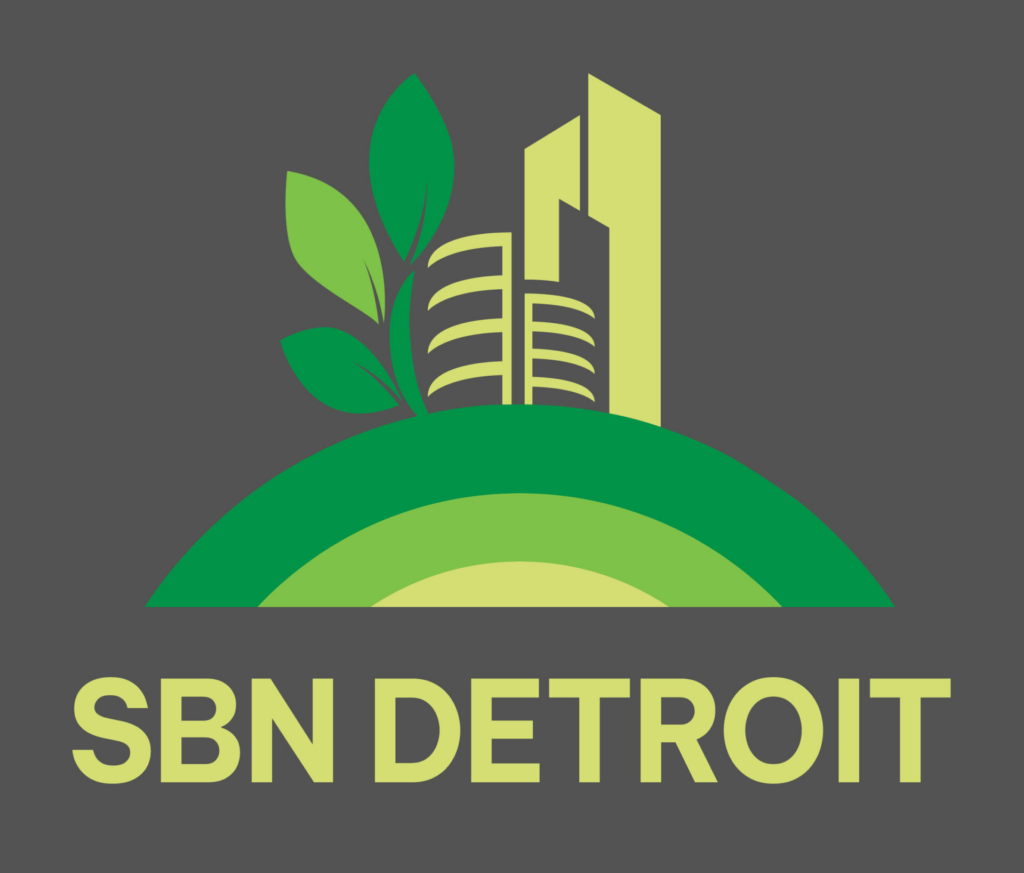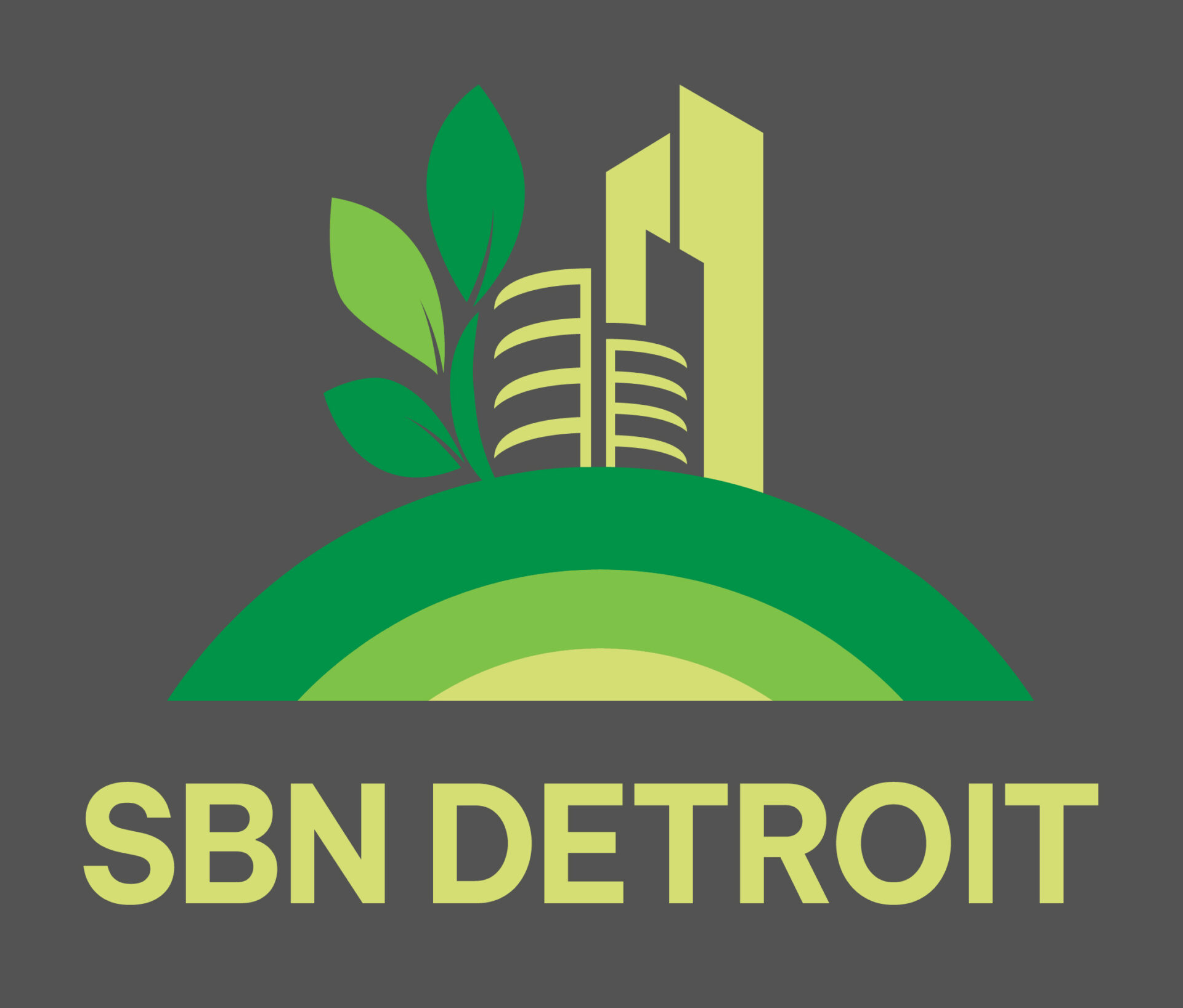The Role of Businesses in Sustainability
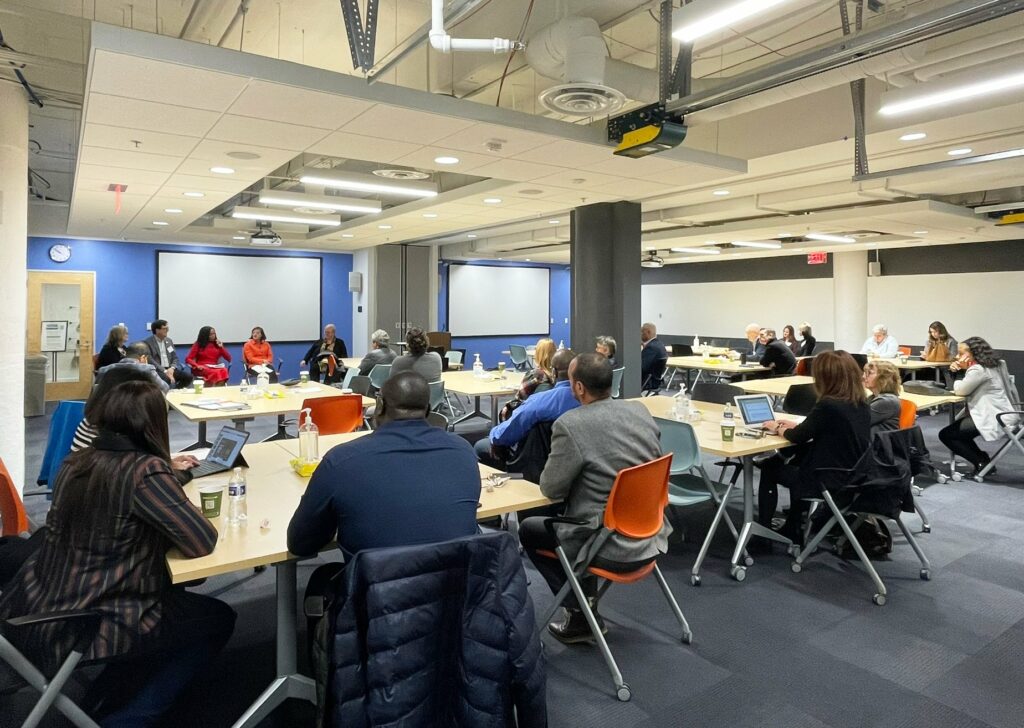
A sustainable Great Lakes region cannot be achieved without the leadership, involvement, and commitment of businesses. From decarbonization and the circular economy to water stewardship and workforce development, businesses across all industries and sizes have a unique opportunity to make decisions and investments that impact the region On October 31, the Sustainable Business Network of Detroit (SBND) and the Council of the Great Lakes Region (CGLR) held a jointly organized event to hear from business leaders who share a commitment to sustainable development and learn about the actions they are taking to embed sustainability in their operations and corporate strategies. Discussion focused on the role of businesses in sustainability, measuring the data, automation, and workforce development. The panelists were: Edna Lorenz, energy director for Corewell Health. Mark Schrupp, executive director, the Detroit/Wayne County Port Authority. Lillian Woolley, senior chemical engineer, Fishbeck. Shanelle Jackson, senior manager for State Government Relations for LyondellBasell. Colin Bird, Consul General of Canada in Detroit, also participated as a special guest. Takeaways follow: Bird: This region really is the epicenter of North America, and we have the ability to become the green economy that powers the world and addresses climate change issues around the globe. Wolley: Regarding the role businesses have in sustainability, I think every business and industry is different. Businesses certainly need to support the efforts the state has committed to, and there are programs and utility rate breaks available to help. Shrupp: Businesses will do what is in their interest financially. Five years ago, businesses were largely not engaged in sustainability, but they are at the table now because government entities – and their customers – have made it a priority. Jackson: I think employees today want to be proud of the company they work for and are demanding more and more from companies regarding their sustainability commitments. Shrupp: The Port of Detroit is the linchpin of manufacturing in the city. Heavy industry comes in here and that’s been a huge cost to the environment and air quality. We are developing a decarbonization plan now and we hope to create the greenest port in the Great Lakes and act as an example for others. Jackson: When it comes to sustainability, we are engaging employees at every level from the factories to the C-suite, and having the conversations. Woolley: When it comes to metrics there are companies that are good at it and companies that don’t know what they should be looking at. There are lots of tools available to help though. Lorenz: One of our 2024 initiatives is water. Not just the water we drink but the water we wash our hands and bedding and dishes in. Hospitals utilize water for heating and cooling and there is chemical treatment of that water. This is a big initiative for us in 2024. Shrupp: Working in a port region is a dirty job. The air quality is bad. We are working to raise the level of standard and pushing that agenda throughout the industry. Jackson: I’ve been hearing women and people of color are saying we’ve seen a decline when it comes to DE&I. There was a push for it in 2020 (and before) but was it a thing of the moment? Lorenz: I think healthcare is embracing automation. We have robots delivering food to patients and robots making food. The industry is utilizing software and AI solutions to supplement human staff so that human staff is better able to focus their attention on the data analysis piece. Jackson: Our top goal is to help end plastic waste so we need the latest technology to do that. LyondellBasell is consistently investing in opportunities to increase innovation in ways that will ultimately save us money. Shrupp: There is a lot of work to be done. We need more young people to choose to live in this region and help our businesses transition. Millennials are raising the importance and demand for sustainability. Be sure to subscribe to our newsletter for regular updates on sustainable business practices in and around Detroit.
‘We’re Building More Than Just a Building Here’

Novi-based Cunningham-Limp is developing what it is planning to be the most sustainable construction project in Michigan. The six-building corporate campus at 35917 West 12 Mile Road in Farmington Hills will serve as the new Detroit Engineering Center for electrical connection maker Japanese Solderless Terminals (JST). All materials for the buildings are naturally sourced, and the construction will feature no drywall, paint, structured steel, catch basins, storm pipes, carpet, or other synthetic products. SBN Detroit interviewed Jake Gardner, Cunningham-Limp project manager for the development, to find out more. Q: How does Cunningham-Limp approach sustainability as a company overall? A: Our mission at Cunningham-Limp is to make a positive impact on people, communities, and companies, and prioritizing environmental sustainability is one of the ways we fulfill that mission, so we work with our clients to implement creative, sustainable solutions wherever we can. Q: How did the JST project come to fruition? A: It first came to us through our president, Samuel J. Ashley Jr., who was immediately intrigued by the opportunity to be a part of something special in a commercial corridor using a completely sustainable methodology that will have a positive impact on the community. His first reaction was disbelief. He couldn’t imagine that something like this would ever be undertaken in our region. However, after introductory meetings and building relationships with the collective organizations participating in the project, we went into the early planning stages. Six years later here we are. Q: What is the impetus behind this project? A: The development is an homage to the forest and Japanese culture and design. The primary concept behind the project is to showcase the idea of harmony between people and the ecosystem, Japanese and American cultures, and the preservation of nature in a built environment. The philosophy is to promote corporate development in a way that is both humane and beneficial for the land it is being built on. The artistic portrayal of the forest in this project is more profound than any existing standards or certifications could reflect. Q: How do you approach a project like this? A: There was more than a decade of strategic planning before construction began. All aspects of the forest were thoroughly researched, and the findings of those studies have guided design and construction. Q: Is it more expensive to construct this way? A: It ultimately depends on what you consider to be an expense – and it’s important to look beyond just the financial aspect. We need to consider the impact our actions have on the environment. Yes, certain things may come with a financial cost, but the true cost of not taking care of our planet is far greater. We’re doing the right thing to make a positive impact on the planet. It’s not always about the money. Q: What are the biggest challenges? A: The unconventional approach to this project brings on many challenges. Some include stormwater management, utility connectivity between adjacent sites, and finding subcontractors who can perform the required construction techniques (building a thatched roof, for example). Also, because of the uniqueness of this project, a lot of the truly sustainable elements go beyond current ordinances and engineering standards, so getting the concepts approved took more effort than a traditional project would. Finally, finding subcontractors with the right mindset that are of commercial scale and size but whose quality of work is that of a high-end residential craftsman style approach is a challenge. Q: How will the building be cooled and heated? A: Geothermal energy is utilized to naturally heat and cool the site, while other supporting elements assist in regulating the temperature of the building. For instance, in the test lab, passive heating and cooling are implemented around the perimeter. This involves an unoccupied air chamber around the primarily underground test lab that helps in keeping the air cool, and skylights throughout the perimeter that aid in warming the air up. These elements reduce the workload on the geothermal energy system. Q: How was the site chosen? A: Our client and project owner, JST, wanted a heavily forested site located in Farmington Hills close to their local partners. They conducted extensive studies of the land, including the prior inhabitants of the site dating back to the Native American Potawatomi Tribe, as well as the identification of every plant and animal species represented on the parcel. Following the research, it was strategically picked because the property is one of the last forested sites in JST’s target demographic, with natural water features and proximity to JST’s current office. Q: Do you think this project will act as a “lead by example” with others looking to pursue more environmentally friendly structures? A: The dream and hope of the entire project team is for this approach to become a trend and be replicated by others moving forward. In fact, we are optimistic that the neighboring 30-acre site will also be used in an environmentally conscious manner. We hope whoever acquires the property will continue honoring the forest and its story. Q: What are some examples of other Cunningham-Limp projects that are focused on sustainability? A: JST is one of the sustainable builds that C-L is most known for, but we have extensive experience in implementing sustainable practices in our projects and working in sustainable markets. In 2005, the State of Michigan made a requirement that any new building had to be LEED-certified, so we built the first LEED-constructed project owned by the State of Michigan, which is occupied by the Department of Environment, Great Lakes, and Energy (EGLE). Additionally, we include adaptive reuse, Energy Star, and required environmental practices as part of our standard project delivery. We are currently working on two electric vehicle battery testing laboratories in Auburn Hills. Another project that’s been recognized for its sustainable construction is the Commongrounds cooperative project in Traverse City. Additionally, we recently received a 2023 Project Achievement award from CAM Magazine for our Orion Township Municipal Complex, which had many environmentally sustainable
The Inflation Reduction Act and More

The Inflation Reduction Act of 2022 marks the single largest investment in climate and energy in American history and provides potentially transformational opportunities for businesses and organizations of all sizes. On October 17, SBN Detroit hosted an informative discussion regarding these opportunities as well as those under the Infrastructure Investment and Jobs Act of 2021. The discussion focused on clean energy programs, available resources, workplace infrastructure, integrating different forms of funding, and partnerships. A list of resources is at the end of this article. The panelists were: Jerry Davis, professor, Ross School of Business, University of Michigan, oversees +Impact Studio and is faculty director of Business + Impact. Stacey Grant, principal and founder of Path Consulting, which offers equity-centered consulting support for communities, organizations, and nonprofits. Elizabeth Wallace, associate director, Michigan Community Programs, Elevate Energy Zachary Kolodin, chief infrastructure officer, State of Michigan The event was moderated by Nina Misuraca Ignaczak, founder, publisher, and editor of Planet Detroit, a digital media startup with a mission to produce quality climate, equity, health, and environmental journalism in the public interest. Takeaways follow: Kolodin: Michigan is a model for the country. Our main goals are to make sure the state gets internal justice for our projects and to bring in quality jobs. It is a great time to be in state government. Grant: The funding and resources are meant to benefit your communities. We need to advocate and make this happen, and we can do this in a data-driven way. Davis: The IRA is like gelato. There are thousands of programs and a lot of acronyms. There are also some great resources to look at that are specific to Michigan. It’s really important to familiarize yourself with the basics of what is out there. Grant: We are talking about funding that isn’t a cycle. It is rolling out through 2032. This is a moment, but we are also talking about longevity. If you are not in the game, you can still get in the game, and win the game. Kolodin: When we talk about workforce infrastructure in this space, we often miss the capital needed. When we look at skills, when we look at humans, we fail to look at access to capital and replicating the needed qualities for the replication of these skills in the workforce. Kolodin: The IRA creates obvious funding opportunities to create a low-interest capital fund to support entrepreneurs in this space. We need to look into how to create a fund like this and get access to capital. We need to get creative to get money where it needs to be. Wallace: Through the IRA, there is the greenhouse gas production fund. This is funding that is going to capitalize on these clean energy products. There is pro-bono technical assistance and legal support for communities and residents to try to alleviate the complexity if you are a business owner looking to do energy projects. Wallace: There are a lot of incentives for cities to partner with other cities, community organizations, and local businesses. Davis: It’s important to focus on mid-management. Commitment from senior leaders matters, but midlevel leaders and managers make the difference day-to-day. Michigan Saves is a great resource. I felt they were really helpful specifically for contractors because there are so many details in the IRA – and they simplified things greatly. Wallace: If you are looking to receive capital, there are a lot of different ways to get into the programs and the funding that is coming from the IRA. Keep an eye on what is going on locally and regionally and see where some of these things align with your organization and if you want to expand into it. Wallace: It’s a time to really collaborate with other organizations with similar goals and local, state, and regional governments to see what programs are coming down the line that may be beneficial for your organization. Grant: We are dealing with crises daily. A shift in power is required. I invite people who are in positions of power and who have access to information and resources to make themselves available. If you do not have that invitation, then you need to create that relationship. Click here for a list of resources. Be sure to subscribe to our newsletter for regular updates on sustainable business practices in and around Detroit.
Greektown Monroe Corridor Redevelopment Priorities Include Sustainability
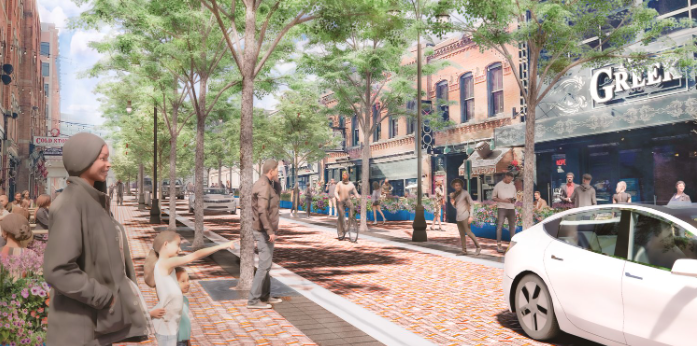
In June, the Greektown Neighborhood Partnership was awarded a $20 million infrastructure grant by the Michigan state legislature to redesign the Monroe Street corridor. The goals of the redesign are to prioritize pedestrians, drive economic development, calm vehicular traffic, green the area, create space to accommodate outside seating for the restaurants and cafes and connect Greektown to surrounding communities as well as the core of downtown. The project also incorporates several sustainability practices layered throughout. Melanie Markowicz, executive director of the Greektown Neighborhood Partnership, spoke to SBN Detroit about what this means to the residents, businesses, visitors, and patrons in the area. Q: How will Greektown use this $20 million grant? A: The Monroe corridor redevelopment is going to be transformative for Greektown, Detroit, and the whole state. Greektown is one of the oldest neighborhoods in the city. Its roots go back to the 1830s with German immigrants and Greek immigrants settling here throughout history. Today much of Greektown is owned by multigenerational Greek families. There is this intimate feel with the buildings being so close together and this gorgeous architecture. It’s a special place. Monroe Street has the highest pedestrian usage in downtown Detroit with prepandemic numbers reaching up to 19,000 pedestrians per day. Pedestrians outnumber the cars. There is a wealth of restaurants and bars and entertainment. So, with this grant, we have set out to define the future of Monroe Street and pedestrianize it in a formal way. We will reorient vehicular traffic to one lane in the center of the street and create very wide sidewalks lined with trees and amenities. Currently, there is only one block that can facilitate outdoor cafés and seating, and we want the whole corridor to be able to do so. The street will ideally become pedestrian-only on weekends and possibly more often than that. We will create and activate a corridor that truly functions as a beautiful, inviting, connected, and unique public space that incorporates and celebrates its cultural heritage within the design. Q: How do you think this redevelopment will impact the businesses around it? A: I think the impact will be significant. Once done, every business that has wanted an outdoor café will have the ability to have one. Before we began planning, we met with every business owner to understand how their business functions so that we can design it to best suit their needs. When the street is closed to traffic, the center lane will become a pedestrian lane. It will also allow for programming of different kinds. We are building hooks into the ground for tents and designing the space for these activations and festivals. Pedestrianizing the Monroe Corridor has been a long time coming for this neighborhood and we are thrilled to have the support of the state. Q: What are some ways you are incorporating sustainability within this development? A: Sustainability can take a lot of forms from the environment and greening to energy to the materials being used to connectivity within a community. I think there is a sustainability element to how we approached the project, inviting everyone to the table for the conversation from property owners to businesses to residents to city departments. It’s been fully collaborative to ensure that what we develop here has a long lifecycle. There are certainly sustainability elements to seeing shifts in climate change. We are working carefully to add mature trees to provide the area with a tree canopy and control the temperature. We are intentionally using pavers for the entire corridor versus concrete, so they can be removed for utility work and reinstalled versus concrete or other materials going to a landfill. We are exploring infrastructure technologies such as ice melting and EV charging stations. Q: What do you think are the biggest opportunities? A: We are creating this intimate yet connected space in Detroit that has this authentic flair and feel. There is the greening element and the pedestrian element. Greektown is a tourist destination, so these changes will enhance that experience and allow for even more foot traffic. Greektown is a core area of downtown yet it has been largely separated. With this project, we aim to connect the urban fabric including the downtown area, Paradise Valley, and more. Another significant element is that there are all of these other projects in the pipeline around us – and that is intentional. We’ve all been working together. From the Monroe Street corridor to the Randolph Plaza Streetscape project to the restoration of Bedrock properties to the Cadillac Square redevelopment to new public spaces in Paradise Valley – the whole area will change dramatically in the next five years. Q: What are the economic opportunities? A: I think there are huge economic opportunities, especially tied in with these other projects. We have this boom of development in the area and underutilized properties. We anticipate vacant spaces being filled and activated. The businesses will be impacted with more patronage and activation of more outside space. Q: What about the community and cultural impacts? A: We will incorporate the cultural and architectural heritage in everything we do. Many of the property owners are multigenerational Greek families who have been in the community for decades and created this unique niche and it’s critically important to preserve and highlight that. We will continue to utilize and preserve Victorian architecture. We are also being intentional about incorporating public art including murals and more. Q: Is there a job creation aspect involved in this project? A: Yes. Within the construction and project itself, and also, once we can program the whole space in a new way, that will create jobs along the corridor and within the businesses. Q: What is your vision overall for the future of Greektown? A: The beauty of this is that the vision comes from the community itself. That’s what gets me excited. Incorporating and sustaining Greektown’s heritage and improving on that so that the area just continues to get better and become more connected.
30-Year Architecture Firm Looks Toward Sustainability in Design
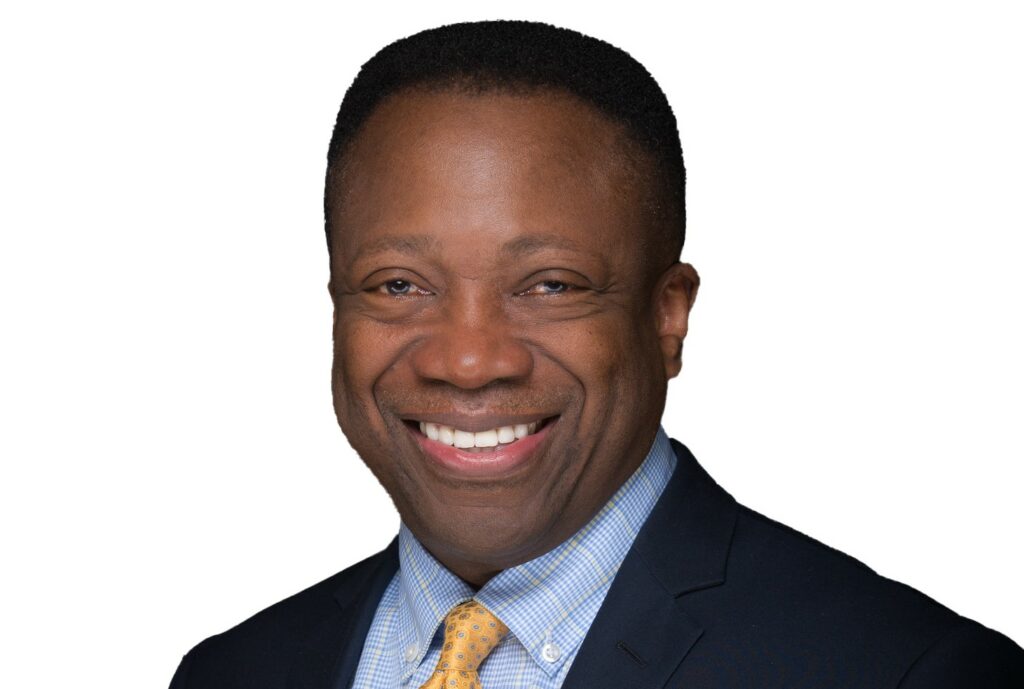
Hamilton Anderson Associates (HAA) sits in the heart of what was once Harmonie Park and is now Paradise Valley – and has since the architecture firm’s start in 1994. Its doctrine is to ‘design sustainable communities that inspire change,’ and this encompasses not only architecture, but interior design, landscape architecture, urban design and planning, and development services. The firm was founded by Rainy Hamilton Jr. and Kent Anderson. SBN Detroit spoke to Hamilton about the firm’s sustainability focus and impact on Southeast Michigan. Q: Tell me about HAA as it relates to sustainability A: This is a big topic. Overall, we are always looking to have a positive impact on our clients’ projects and ultimately their bottom line. We always strive to have their best interests in mind and toward that, we need to be cognizant of the design approach, and how we can spend their funds wisely and thoughtfully. We incorporate products and materials that can be recycled or have been recycled, and that are manufactured locally, whenever possible. We think about how we can craft design solutions that take into account the environment and the planet – such as how we can include passive energy generation like wind and solar power. Also, how we manage stormwater is a significant topic with large impervious areas such as roofs and surface parking areas. All of these things are embedded in our thought process for every project. Q: Has HAA always had a focus on sustainability? A: Yes. As trained architects, it has become more commonplace over the last several decades to have this mindset around sustainability. We have been trained to push for well-crafted design solutions that minimize the impact on the environment. We are conscious of utilizing renewable resources such as lumber. Reforesting serves to replenish these natural resources when done properly. At Hamilton Anderson, sustainability is built into our design processes. It is in our DNA to minimize the impact of building on Earth and be sensitive to the environment. Q: Your website says that HAA designs sustainable communities that inspire positive change. Will you elaborate on this? A: In very simplistic terms, let’s think about a typical day. If we can craft our public rights-of-way to be rich and beautiful with adequate lighting and thoughtful landscaping when people move through these areas their spirits are lifted. You feel a very different reaction if you walk through an area with no investment, no landscaping, and no thought or work put into beautifying the space. These types of conditions can negatively impact one’s psyche. Good design is good business. We want to create places of work, rest, and play toward the best possible experience. Q: What are some examples of this? A: We were excited to be part of the design team for Little Caesars Arena. The urban design solution implemented recessed the seating bowl down below grade to reduce the overall height of the facility on the street. Building elements such as retail outlets and other activities were placed around the bowl and the exterior facades were articulated in varying ways to create a wonderful street environment. The result is an active, energized Woodward Avenue with wonderful streetscapes. As we travel the Woodward Corridor, there are many HAA projects that have been completed and have contributed to the growth of Detroit. Projects include the Wayne State Welcome Center, the Addison Hotel, the Strathmore Hotel, Crystal Lofts, Woodward Place, Hamilton at Midtown, Woodward West, Detroit School of Arts, and City Modern. Our work on the Hudson’s Tower with the Bedrock team involves enhancing the downtown area with this major new landmark building and thinking about how it intersects the ground plane and surrounding streetscapes. We rode by the Port Authority Building the other day that we designed on the Detroit River. We suggested a second floor be added to what was originally going to be a one-story structure. Now, there is a gathering event space on top that takes full advantage of the riverfront views. This banquet and meeting space has had a positive impact on the Port Authority’s bottom line and has enhanced the visitor experience. We are thrilled to be working on the expansion of the Music Hall and how to craft this new building next to the historic Music Hall. This addition will enhance the hall and will shine as a beacon welcoming visitors into this vibrant district. Q: How does developing the economy in Southeast Michigan come into play in your work? A: The projects we help bring to fruition and the overall momentum happening in Detroit play a huge role in sustaining and advancing the economy in Southeast Michigan. When I think about the Henry Ford Health right in Midtown, we are proud to be part of the design team. We are influencing how this large development meets the ground plane and embraces the surrounding community. This is critical for the success of this project. The sheer number of jobs this project will create is good for the city and enhances the future of healthcare in Detroit and Southeastern Michigan. All of this will enhance the livability of our city. Over our thirty years of practice, I’ve seen development and construction blips occur in Detroit. Large projects begin and end and there have been development lulls in between. But now we have momentum. We are seeing sustained growth on many fronts. We are seeing new housing and sustained growth occur that is fueling our economy. Q: How important is choosing suppliers and partners that also have a sustainability focus? A: Very important. We work with many different engineering consultants that follow best practices for sustainable design. Many of our contractors are LEED Certified and employ sustainable practices in constructing projects. Q: What are your biggest challenges? A: We are having difficulty finding professionals to grow our practice. We are currently a firm of 40 professionals and are looking to grow but struggling to find the right team members. Also, quality assurance is critical. We practice internal
Historic Detroit Hotel is Renovated With Sustainability in Mind

The Westin Book Cadillac Detroit, a historic 31-story hotel on Washington Boulevard, executed a $20 million makeover this year, and sustainability was part of the plan. The hotel first opened nearly a hundred years ago in 1924 and had several owners before closing in the 1980s. It was reopened in October 2008 after a $200 million restoration. It is managed by Marriott International. SBN Detroit spoke with Scott Stinebaugh, director of sales and marketing, The Westin Book Cadillac, to learn more about how sustainability has played a part in the renovation. Q: Talk to me a bit about your sustainability approach. A: For a long time, I think we were not doing as much as we could have been. And then we were hit with COVID and all things came to a grinding halt. As we started looking to renovate the building, that presented many opportunities to improve on what we had been doing. The hotel is just emerging from a $20 million renovation. Looking back to 2008 when we reopened after a full-scale $200 million restoration, we had state-of-the-art HVAC, water flow, and energy equipment at that time, and now fifteen years later, it’s time to improve the infrastructure and systems. And we’ve done that. Q: What are some examples you can point to? A: We’ve upgraded the 453 guest rooms and public areas to 100% LED lights. We replaced 1,500 four-foot fluorescent tubes with LED lighting, and 330 75-watt halogen bulbs have been converted. All of the guest rooms had individual heat pumps so that was a good start, but we upgraded the public area HVAC system to a system that has a sensor and uses outside air when the conditions are right to cool the building. Another part of the renovation was converting 75% of the tubs in the guest rooms to stand-up showers (which can save water). We donated as much of the furniture as we could to divert it from landfills. Habitat for Humanity took as much as possible, and the rest went to liquidators who used third parties to reuse the furniture. We now recycle all cardboard, bottles, and cans and have them picked up weekly. From a food waste standpoint, we work with Metro Food Rescue. We call them when we have extra untouched food and they come pick it up within an hour and distribute it to people in need. We are also working with Make Food Not Waste to get certified through their PLEDGE program focused on reducing wasted food. In meeting rooms, we now have water bubblers versus serving water in pitchers and we converted from plastic water bottles to box water. In line with our brand, Westin has a new initiative called The Well in which guests can get complimentary water in the lobby and refill the throughout their stay. We sell glass bottles that guests can use also. We are among the first Westin hotels to launch this. Q: Do your guests ask about your sustainability practices? A: Yes. We get a lot of questions about our sustainability practices. We know this is part of the decision-making when people are choosing venues for events. It’s happening more and more, which I think is great. Q: What are the biggest challenges? A: Being consistent. Sometimes we get so busy in an operation like this. We are a $40 million annual revenue entity, and the work can seem endless. It’s about not getting lazy and staying consistent. Because it’s easier to throw that piece of waste in a place where it does not belong versus recycling. It’s easier to throw food away versus calling for a pickup. It takes focus, time, and accountability and that, I think, is our biggest challenge. Q: How do you keep staff accountable? A: We have weekly goals in every department that we call WIG (Wildly Important Goals). These are important goals that we put into a measuring platform every week, and sustainability goals are a part of this. There are small and large things in each department that, combined, make a difference. Q: What are the biggest opportunities? A: I think there are more things we can do in all areas of the hotel and also the ongoing education of the staff. Making sure when staff turns over that our sustainability commitment and practices are ingrained in new employees so that our efforts are not weakened or broken is critical. It’s important to keep that fire going. Q: Do you find your staff to be enthusiastic about the sustainability efforts? A: Yes. I think they are excited about making a difference. I see it in the commitment they have to follow and work through the processes that are in place. And the overall commitment here comes from the top down as well. Q: How do you think your efforts might influence businesses in Southeast Michigan? A: We all need to be good corporate citizens and responsible to the earth. I think when others witness our efforts and the efforts of those around them, that can be contagious. I hope so. Q: What are you most proud of when it comes to the practices you’ve implemented? A: The metro food rescue. I’m a day one employee in this hotel. Over the years, I’ve seen a lot of food waste. Food that is untouched going into the trash. Putting a stop to that and being able to give perfectly good foot to those in need is huge. And imagine if everyone did that. Be sure to subscribe to our newsletter for regular updates on sustainable business practices in and around Detroit.
Automotive Leaders Discuss Navigating the Shift to Mobility
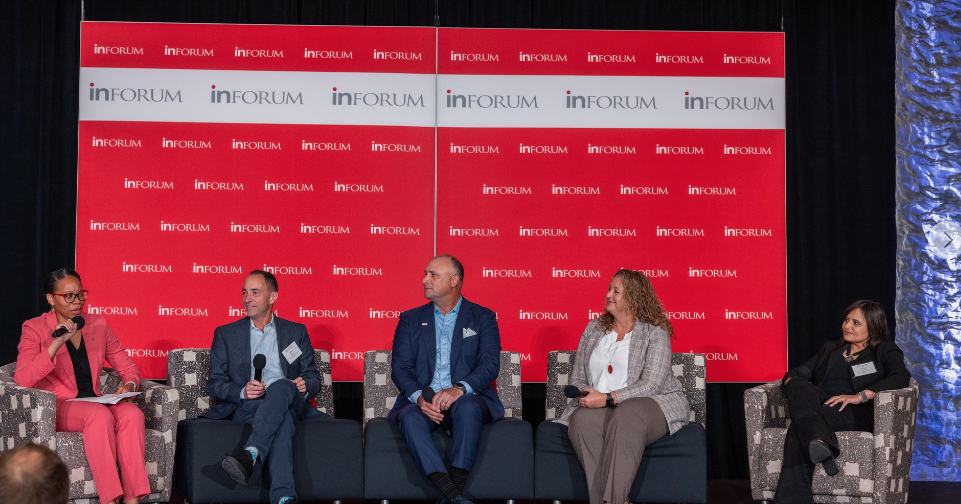
Automotive always has been a technology-driven industry, but in the next ten years, there is likely to be more change in the industry than there has been in the last hundred. And much of that change will be taking place in Michigan. That shift – which moves automotive toward becoming a more sustainable industry – was the topic of a Sept. 15, 2023, breakfast, “Navigating the Shift to Mobility – With Detroit as a Leader,” hosted by Inforum, a nonprofit focused on accelerating women’s careers. The themes included diversity, new opportunities that come with and from young and emerging talent, the power of partnerships, and the future of mobility. Panelists were: Aruna Anand, President and CEO, Automotive Group Sector; head of architecture and networking, Continental North America Kristen Tabar, group vice president, Advanced Mobility Research & Development, Toyota North America Paul Thomas, president, Mobility in Americas, Bosch (effective Jan. 1, 2024), and Alan Wexler, senior vice president, strategy, and innovation, General Motors Justine Johnson, chief mobility officer for the State of Michigan, moderated the discussion. Our takeaways follow: Thomas: When you look for talent, look for talent that looks different from you. Different countries, beliefs, and perspectives, you have to look for talent that has diverse opinions on solutions. The world isn’t as simple as you think it is sometimes. Taber: When students look for a job, remember that it is not a one-and-done deal. You may think this is your passion and you work in this space, but what we see is that people evolve. That cross-pollination and common way to move throughout your career and experience different aspects of this new mobility solution. It’s a completely different landscape that requires different skill sets and backgrounds. Anand: We need to see ourselves in those positions that we are aspiring to be. If you do not have representation, then you don’t know what it’s like and you don’t have the confidence to do something because it is not done. We need to increase the pipeline. Then you understand the reasons why you can’t do this or what else you can do to fix it. Wexler: We see a world with zero crashes, zero emissions, zero congestion. Taber: It is about the products that we put out, how we operate our businesses, and the ripple effect on our supply chains. We need very clear, measurable methods so we are using similar yardsticks. Thomas: We want to invest in communities, we invest in Detroit and the Midwest very heavily to bring mobility people into our companies. We are also always on the diversity journey. You will never know when you are done because diversity is something that you always must work on. Anand: We tend to want to be perfect before we try new things. We find reasons to not be good at things. What is stopping us? We need that coaching, mentoring, role models, all of that together to build that pipeline better. Wexler: (Talent recruitment) really starts with the “why.” … We need skillsets from other industries. We’re becoming more technology-oriented … we pioneer the innovations that move and connect people to what matters, so it’s who wants to be part of that purpose and do something impactful. Taber: We have to understand that none of us is going to be able to move the technology forward by ourselves. It is going to take partnerships that we probably wouldn’t have thought of ever before. Anand: If we can provide an environment that is flexible, then the talents will be able to grow. Thomas: The ecosystem is so large and the opportunities to do different things are available to each one of you in the room. There is so much information out there on how to get involved in mobility. Wexler: There isn’t another industry that has the same opportunity to heal the planet. Experience the full event here. Be sure to subscribe to our newsletter for regular updates on sustainable business practices in and around Detroit.
Interconnected Set of Greenways and Blueways to Create New Southeast Michigan Trail

There’s the Appalachian Trail in the East, the Pacific Rim Trail in the West, and the Continental Divide Trail in the Rocky Mountains. Now, Southeast Michigan will have its own regional trail called The Great Lakes Way. Over the past several years, the Community Foundation for Southeast Michigan (CFSEM) has convened a group of organizations, municipalities, and agencies to explore ways to build on the freshwater assets of the Southeast Michigan region. They created the vision for The Great Lakes Way. Once complete, The Great Lakes Way will be an interconnected set of greenways and blueways (water trails) stretching from southern Lake Huron to western Lake Erie, passing through the counties of Monroe, Wayne, Macomb, and St. Clair. The Way incorporates about 160 miles of greenways and 156 miles of blueways along Southeast Michigan’s coastline. SBN Detroit spoke with Greg Yankee, CFSEM director of arts and environment initiatives about the vision, the sustainability aspects, and how Southeast Michigan businesses can get involved. Q: How did The Great Lakes Way get initiated under the Community Foundation for Southeast Michigan? A: We’ve been seeing a great greenway movement happening throughout the region. Communities are making serious investments in fantastic projects but there are gaps between them. It led us to think about how to connect these trails and in general, how to give more people access to trails and greenways and waterways all across the region. So, our mission is to connect people to the outdoors, to each other, and to water in a bigger way. This requires funding and community engagement and the actual work to make it happen, and all of that needs to occur in a certain order. The Community Foundation of Southeast Michigan works across all of these communities and can facilitate the outreach, coordination, and funding so it makes sense for The Great Lakes Way to have this initiative with us. We have a 35-member advisory committee at the heart of The Great Lakes Way project, providing us with information, guidance, and connections to critical resources. Committee members include representatives from the Michigan Department of Natural Resources, the Metroparks, Michigan Trails and Greenways Alliance, the National Park Service, as well as parks and recreation leaders from the communities all along the route. Q: What solutions are you looking to provide with The Great Lakes Way? A: We feel that there is a definite need to provide more opportunities to spend more time outdoors recreating and enjoying our waterways. For me, growing up in Trenton we had Elizabeth Park on the water, but trails were limited and not connected to neighboring communities. There is a huge opportunity to strengthen community connections and make it easy for more people to experience these incredible natural resources all along our waterways. In short, there is no equitable access to water. In a lot of cases, geographical location determines whether you spend time recreating outdoors. But we are working to level the playing field and put these amenities within reach of as many Southeast Michigan communities as possible. Q: What are the goals of The Great Lakes Way from a sustainability perspective? A: Our goal is to help communities develop their public greenspaces while looking through a sustainability lens. Improving public access to water, building trails, and creating green spaces will also help grow our outdoor recreational economy – a win for the environment and the economy. When residents and businesses witness these projects making the environment healthier, getting people outside, connecting people to places, and enhancing economic opportunities, sustainability becomes more a part of our lives. We want to foster a stronger relationship between people and the watersheds they call home. Q: How does the Community Foundation for Southeast Michigan oversee the implementation of these sustainability practices? A: The projects are planned and managed by the individual municipalities, of course, not us. But our team acts as a resource to help communities in the planning stages by connecting them to resources, experts, and service providers so that sustainability is not an afterthought. We seek to help, not interfere. We are mindful of and in communication with each of the municipalities and communities developing these projects. So, if, for example, Clinton Township is putting in a kayak launch and Trenton wants to do the same, we can connect the two communities to learn from each other and share resources. We do a lot of that. We value being an ally and our goal is helping and facilitating, not managing a community’s projects. Q: We hear a lot about greenways but not blueways. What is the vision for blueways? A: Again, although I grew up in Trenton, I did not consider myself to be living on the water. That’s because the area along the water was an industrial corridor and often impossible to access for recreation. We have these remarkable rivers and lakes, but traditionally it’s only been where factories go. We want to help revitalize former industrial spaces where appropriate and open them up for public recreation and enjoyment of the water. Combining greenways and blueways will be a huge victory for everyone. The defining geographic characteristic of Southeast Michigan is our waterways, and to make a shift toward people enjoying them for recreation, nature appreciation, and gathering places is exciting. This is what creating better access to blueways will provide. Q: How can The Great Lakes Way impact the economy in Southeast Michigan? A: We commissioned a study on the economic impact of The Great Lakes Way. The study shows, all told and over time, that the total economic impact of The Great Lakes Way is in the billions of dollars. Q: How will The Great Lakes Way impact businesses in Southeast Michigan? A: The outdoor recreation businesses will be positively impacted, no doubt. Businesses and other points of interest located along the Way will benefit from people who stop for lunch, coffee, shopping, or to check out a historical landmark. We strongly believe that employers now recognize the
Recycling Rates in Michigan Are At an All-Time High

According to a recent press conference from the Michigan Department of Environment, Great Lakes, and Energy (EGLE), recycling in the Great Lakes Region is now at an all-time high. The total amount of residential recycled materials being reported for fiscal year (FY) 2022 was 620,494 tons – that’s over 66,000 tons more than the previous new record set the year prior. Materials Michiganders recycled last year would fill the football stadiums at Ford Field, Michigan State University’s Spartan Stadium, and the Big House at the University of Michigan. Michiganders recycled over 339,000 tons of paper and paper products during FY 2022, more than 154,000 tons of metals, more than 71,000 tons of glass, and over 45,000 tons of plastics and plastic products. SBN Detroit spoke to the executive director of the Michigan Recycling Coalition, Kerrin O’Brien, and executive director of Green Living Science, Natalie Jakub to get their unique perspectives on how the state got here and how businesses in Southeast Michigan are participating. Q: Recycling rates in Michigan are now at an all-time high. How did we get here? O’Brien: There is a history of recycling in Michigan communities. Those communities that made recycling a priority began to develop their own programs. With advocacy through the Michigan Recycling Coalition, we started to see state-level leadership around 2014. Then Governor Rick Snyder saw the value of recycling and productive materials management and funded four additional recycling technical assistance staffers. The state department also began working with stakeholders to identify the level of funding needed to support a robust recycling program in the state. Funding for recycling was passed in 2018 which supports community grants for infrastructure and market development which are needed to grow recycling in Michigan. Q: How do you think education has impacted the increase in recycling? Jakub: Green Living Science works a lot with youth and in schools and one of the things we continue to hear is that families will often begin recycling because their children have learned about it and want to institute it in their homes. So, more education at a young age is a natural part of this behavior. The more conversations we have about the impact that waste has on our lives, people start to understand. The simpler we can make the education and the actual act of recycling we will see more people willing to participate. The city of Detroit has a 40% recycling participation is a huge jump from 11% a decade ago, so people and businesses are learning and largely eager to support. Q: How does Green Living Science work with businesses in Southeast Michigan regarding recycling practices? Jakub: GLS began in 2011 with a focus on education in the schools but over the years we started to see a great need for local businesses to get support setting up programs. Many businesses don’t have a dedicated staff person so it’s typically an administrator now tasked with everything that is involved with recycling – which can be a lot. We developed a program called Bee Green Business to make it easy for businesses that includes setting up infrastructure, bins, signage, and education. Bee Green Business is an education and certification program that aids businesses and their employees in becoming responsible corporate citizens. This program has been successful from small independent brands like 14 East Café and Red Crown restaurant to large institutions like Henry Ford Health, Ally Financial the DIA, and more. A challenge we commonly see in commercial facilities is that they weren’t designed for more than one waste stream, so there are challenges with space issues and infrastructure needed to make the programs run smoothly and efficiently. Many haulers only offer dumpsters for recycling and we’ve learned that there’s a great need for cart programs. Something mobile that can be moved from an office to a loading dock and dumped. Q: How can we and are we bringing more businesses into our recycling efforts? O’Brien: Our perspective is that recycling services need to be on par with waste services. If we are serious about developing a circular economy and getting the most value out of the materials already circulating in our society then we have to divert waste to recycling. We are working to assure businesses have the services they need to do this. Businesses also have to make the budget and program choices to say yes recycling is worth it. Reducing waste can add to the bottom line and savings can be used to expand services to make recycling even more efficient. Real progress will be driven by a combination of factors including public opinion, consumer choice, manufacturer ESG goals, future resource needs, and policy. Together we think these elements are moving businesses to make smart choices with end-of-life materials. Q: What can businesses get even better at recycling? O’Brien: Right now, brands are driving recycling in a new way. Many national, and international brands are looking at where the resources for making future products will come from and many of them are recognizing that recycling provides them with needed feedstock for new products This long-term thinking about product development and impacts provides good reason to recycle for all of us. In addition, many more job and business opportunities will develop locally as we get better at sorting through waste to recover and process resources for manufacturing that would otherwise be thrown away. Q: What does all of this mean for job creation in Southeast Michigan? O’Brien: This is a big topic but basically what we are talking about in the development of a circular economy is creating a new sector based on extracting resources where no one saw resources before. Anything we can do in this new sector – collection, diversion, processing, secondary processing to turn plastic to pellets, for example, means a new business opportunity in this region, the state, and the country. Diverting the resources that are in our waste offers a huge opportunity for new jobs. Q: Governor Whitmer and the
SEMCOG Working to Develop Plan to Reduce Greenhouse Gas Emissions
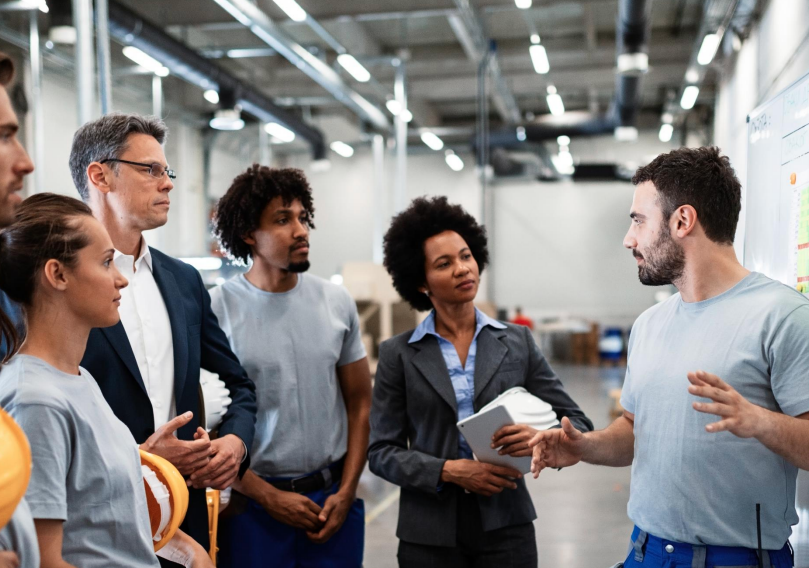
The Detroit-Warren-Dearborn Metropolitan Statistical Area (MSA) recently was allocated $1 million to develop a plan for reducing greenhouse gas emissions and other harmful air pollution through the US-EPA’s Climate Pollution Reduction Grants (CPRG) program. The plan will cover the MSA’s six counties – Wayne, Oakland, Macomb, St. Clair, Livingston, and Lapeer – as well as Washtenaw and Monroe counties. The Southeast Michigan Council of Governments (SEMCOG), which is the lead agency for Southeast Michigan’s Climate Action Plan, will manage the funds. The plan is in place to help local governments improve and maintain Southeast Michigan’s transportation systems, environmental quality, economic interests, and infrastructure. SBN interviewed SEMCOG Planning Director Kevin Vettraino about what this will involve, how it will roll out, and how it impacts businesses, residents, and communities in Southeast Michigan. Q: Tell us about SEMCOG. A: SEMCOG is the regional planning organization for the seven counties that make up the Southeast Michigan region: Livingston, Macomb, Monroe, Oakland, St. Clair, Washtenaw, and Wayne counties. Our primary mission is to support our local government members, including counties, cities, villages, townships, and educational institutions. We work to improve the quality of the region’s water, make the transportation system safer and more efficient, revitalize communities, and spur economic development. These things shape the areas we get involved in. I like to say we focus on planning for the issues or opportunities that cross geographic or community boundaries, such as roads, rivers, lakes, air, and the economy. Q: The U.S. Environmental Protection Agency allocated $1 million to develop plans for reducing greenhouse gas emissions, and SEMCOG is acting as the lead agency to develop a climate action plan. What will this entail? A: At a high level, the plan will establish community-developed and evidence-based methods to reduce greenhouse gas emissions that will meet the requirements of the EPA and CPRG. One approach is to enhance natural areas that capture carbon. The plan will also integrate extensive stakeholder outreach and input, along with equity considerations, and consider the impact of policies, strategies, and actions from the regional level down to the household level. This work complements the recently adopted Southeast Michigan GREEN: Strategic Framework for Growing our Resilience, Equity, and Economy with Nature, which is an initiative to address some of the region’s most pressing challenges – managing floods, fostering climate resilience, improving community health, and protecting our natural assets – all while creating vibrant places where people want to live and where businesses will thrive. Q: What is the next step and timeframe for action? A: The next step will be launching a task force with the intent to meet at least eight times over two years. Part of the large overarching task force will be smaller focus groups that will cover more specific parts of the plan. The focus groups have not been formed yet, but they are likely to focus on transit, energy efficiencies, EVs and the impacts of the transition, materials management, and nature-based opportunities and impacts. Beyond the focus groups is community engagement. This is critical for success. It’s important for us to have a two-pronged approach here, that being education and data sharing and also public engagement and input. Q: What does community engagement entail? A: Surveys, local meetings, webinars, and other outreach with a lens toward ensuring that the benefits and policies that come out of this work support all residents, including lower-income residents. These people have traditionally been underrepresented and more impacted, and we need to ensure that any actions we take support them and don’t further negatively impact them. Q: How will this impact Southeast Michigan businesses and communities? A: My hope is that through our work there is an education component. In basic terms, we need to make sure we are speaking the same language. There are a lot of terms around climate action such as equity, green infrastructure, etc., and we need to ensure that whether you are a business, community, government entity, or a resident, we all have a similar understanding regarding what these terms mean and why they are important. I hope that business leaders can see themselves within the strategies, policies, and actions that come out of this work and align with them. We all have a role to play in this. This plan will not be the silver bullet that can solve the climate challenges in the region but all of us together can make an impact. From installing a green roof or rain garden to ensuring all people have safe facilities to walk or bike to destinations, whether it’s a sidewalk or bike path or considering nature-based and green infrastructure solutions when putting in a new parking lot or reconstructing a roadway, there are things we all need to be thinking about and doing. Q: What are your main challenges? A: Again, it’s getting a common set of words and a familiar language. It’s also about education and making everyone understand the importance of the plan, and working toward a healthier region, and putting sustainability practices in place to support our climate long into the future. A lot of our work targets dates far into the future, such as 2050, and sometimes it’s difficult to get buy-in when it’s so long-term. The challenge is we need buy-in and immediate action to get to where we want on the horizon. Q: What are the main opportunities? A: First, we have the $1 million funding to help develop a plan, inventory our greenhouse gas emissions, and develop policies – which is great. Through the development of this plan, the region and our communities and businesses will become competitive for an estimated $4.6 billion in EPA grant funding for implementation. Second, if we are able to get folks both in leadership and residents across the region to both understand the importance of the action plan and to be intentional about environmental justice and the allocation of funds and the action to support those directly impacted, that is a great success. Q:
